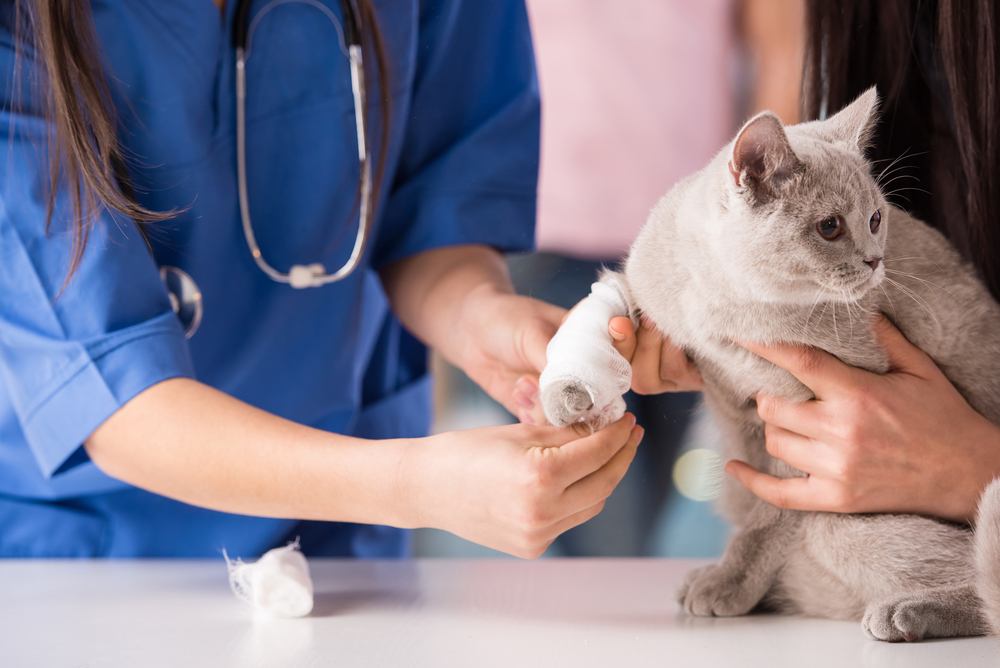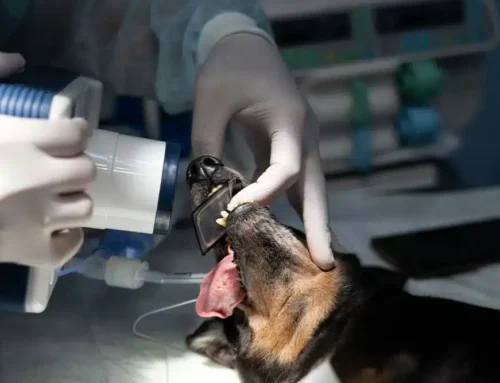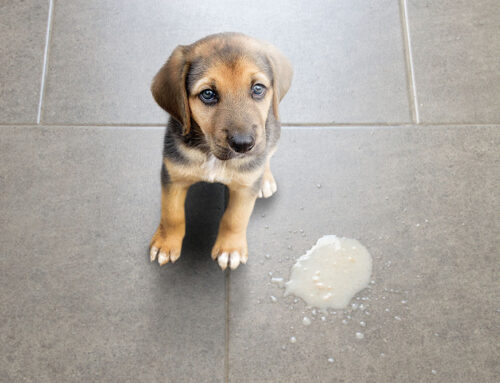Is your cat urinating outside the litter box? They may have feline lower urinary tract disease (FLUTD), a common and complex condition that can affect your feline friend’s health and quality of life. Read our Peak Pet Urgent Care team’s guide to learn everything you need to know about FLUTD.
Feline Lower Urinary Tract Disease conditions
FLUTD is not a specific disease but a term that encompasses many conditions affecting a cat’s lower urinary tract, including the bladder and urethra. FLUTD conditions include:
- Urinary stones — Urinary stones are rock-like mineral deposits that form in the bladder and account for about 10% to 15% of FLUTD cases. The most common stone types are magnesium ammonium phosphate (i.e., struvite) and calcium oxalate.
- Bacterial infections — Bacterial urinary tract infections (UTIs) can occur when bacteria travel up the urethra and into the bladder. UTIs are relatively uncommon in cats, affecting mostly senior cats and accounting for about 5% to 15% of FLUTD cases.
- Urethral obstruction — Urinary stones and urethral plugs can cause a complete urethral obstruction and can be life-threatening. This condition is most common in male cats and should be treated as a medical emergency.
- Cancer — Cancer does not commonly cause FLUTD, but may be seen in senior cats. The most common bladder cancer is transitional cell carcinoma.
- Feline idiopathic cystitis (FIC) — FIC is the most common FLUTD cause, accounting for 60% to 70% of cases, and is diagnosed when no underlying cause can be identified.
Feline Lower Urinary Tract Disease causes
In many cases, the exact FLUTD cause can’t be identified, but contributing factors include:
- High mineral content in the diet
- Inadequate water intake
- Environmental stress
- Obesity
- Anatomical changes
- Genetics
Feline Lower Urinary Tract Disease signs
The most common FLUTD sign is urinating outside the litter box, but your cat may also exhibit other signs, including:
- Vocalizing while urinating — FLUTD results in pain and inflammation in the cat’s bladder and urethra, making urination painful, and your cat may vocalize while urinating.
- Increased urination frequency — Bladder and urethra inflammation can increase the cat’s need to urinate, so they may urinate more frequently.
- Hematuria — This term means “blood in the urine.” Your cat’s urine may be pink-tinged or blood clots may be present.
- Excessive grooming — Some cats groom excessively around their urethral opening in response to the pain and inflammation.
- Behavioral changes — Affected cats may hide more or become uncharacteristically irritable.
- Straining to urinate — A cat with a urethral blockage may strain to urinate but not produce any urine. This is considered an emergency, and you should seek immediate veterinary care.
Feline Lower Urinary Tract Disease diagnosis
Determining the underlying FLUTD cause can be difficult. Potential diagnostics include:
- Blood work — A complete blood count (CBC) and biochemistry profile assesses your cat’s overall health and can rule out potential complications, such as diabetes and kidney disease.
- Urinalysis — Evaluating your cat’s urine is important to check for infection and other abnormalities that can help make a diagnosis.
- X-rays — X-rays are helpful to detect urinary stones.
- Ultrasound — Ultrasound may be necessary to evaluate your cat’s bladder, look for urethra blockages, or assess your cat’s kidney health.
Feline Lower Urinary Tract Disease treatment
FLUTD treatment depends on the underlying condition:
- Urinary stones — Some urinary stones can be treated with a diet change, while others require surgical removal.
- Bacterial infections — Bacterial UTIs are treated with appropriate antibiotics based on your cat’s urinary culture.
- Urethral obstruction — Urethral obstructions are usually removed while the cat is under heavy sedation or general anesthesia. Anti-inflammatories are needed following removal to help alleviate urethral swelling and spasms. In some cases, cats require a urinary catheter for a few days until they can urinate normally.
- Cancer — Chemotherapy and non-steroidal anti-inflammatories may help manage transitional cell carcinoma.
- FIC — FIC treatment involves dietary management, increasing the cat’s water intake, and reducing stress.
Feline Lower Urinary Tract Disease prevention

Not every FLUTD case can be prevented, but steps you can take to reduce your cat’s risk include:
- Consulting with your veterinarian to determine your cat’s most appropriate diet
- Keeping your cat at a healthy weight
- Ensuring your cat gets daily exercise
- Providing clean, fresh water in several areas throughout your home
- Offering a water fountain to help encourage your cat’s water intake
- Keeping your cat’s litter box clean and in a quiet location
- Reducing your cat’s stress levels
- Preventing intercat bullying if you have multiple cats
If your cat is exhibiting signs indicating FLUTD, contact our Peak Pet Urgent Care team, so we can determine the underlying cause and devise an appropriate treatment strategy.







Leave A Comment